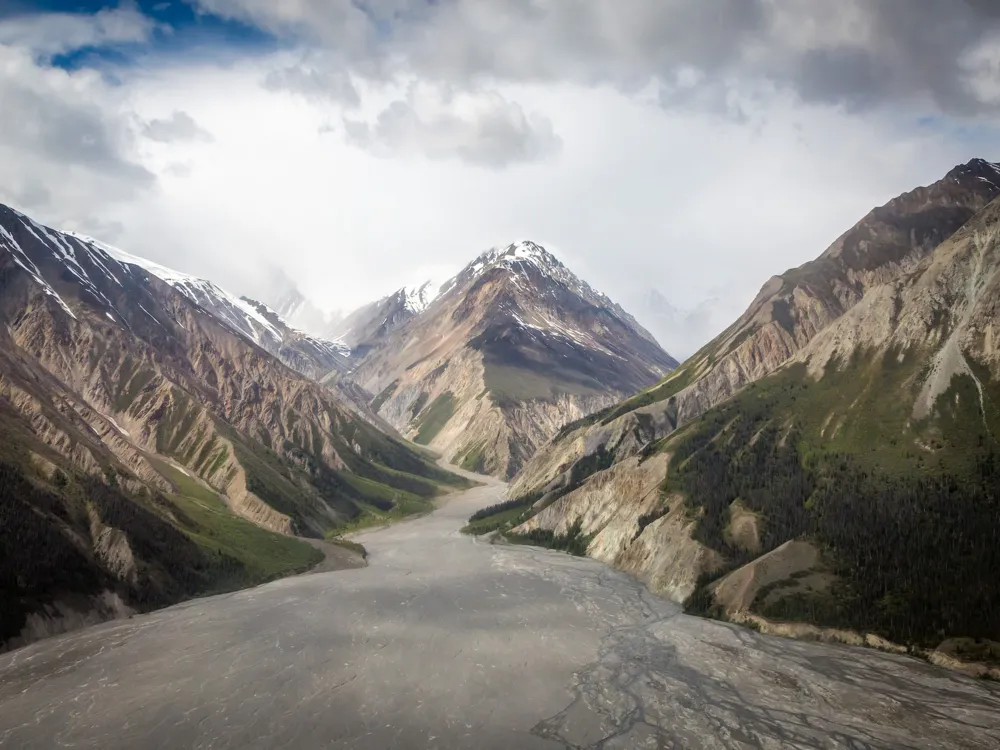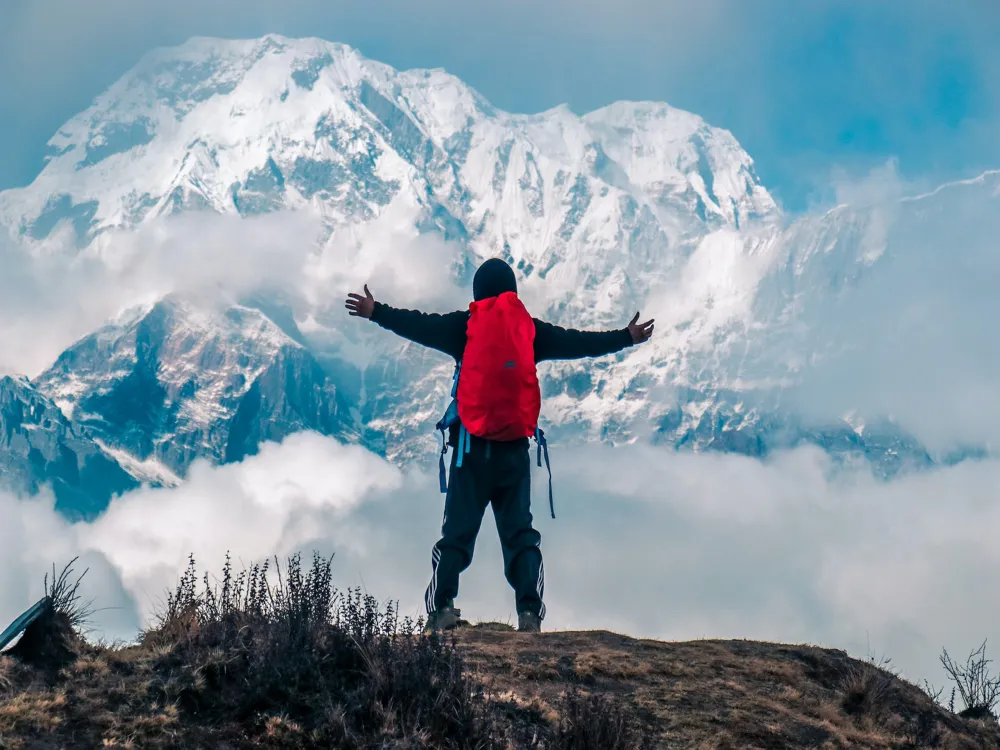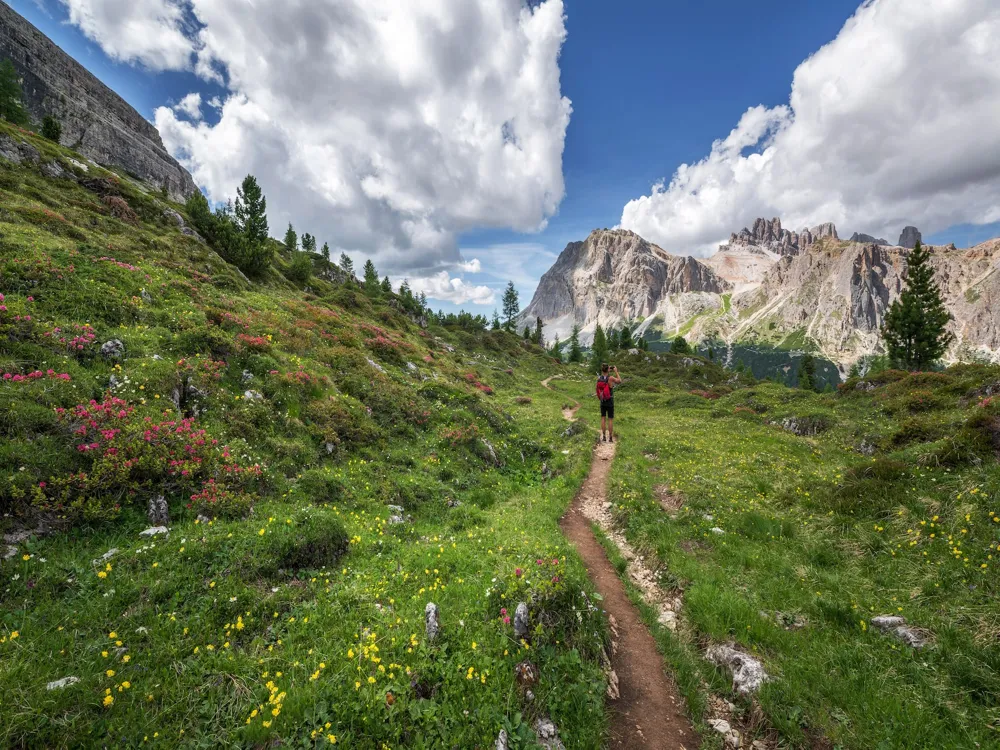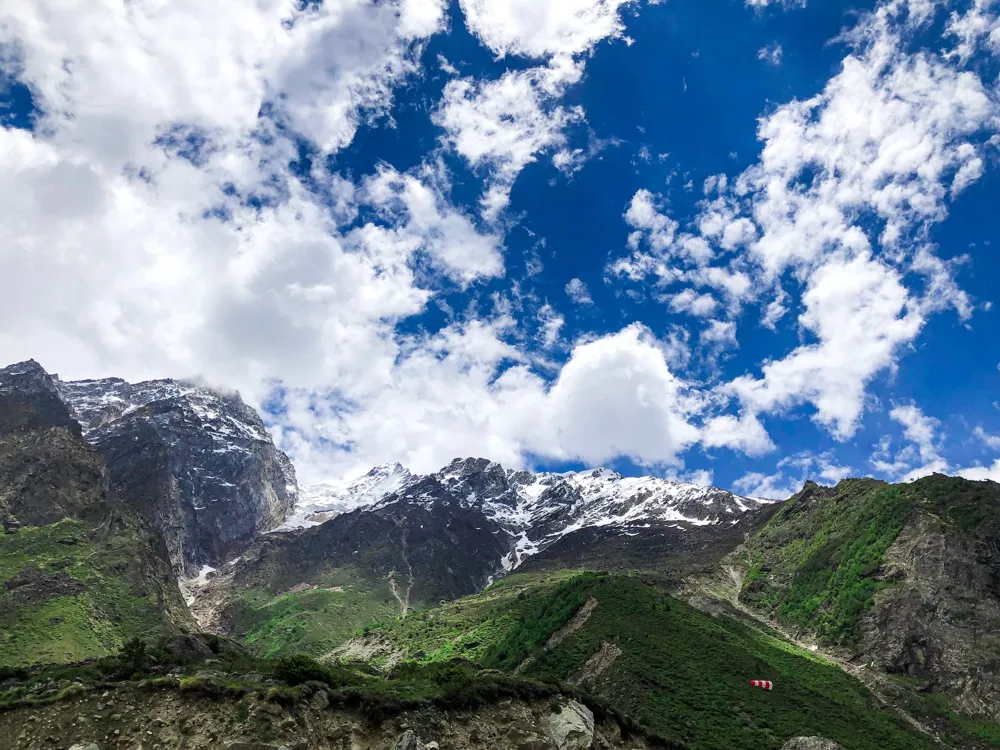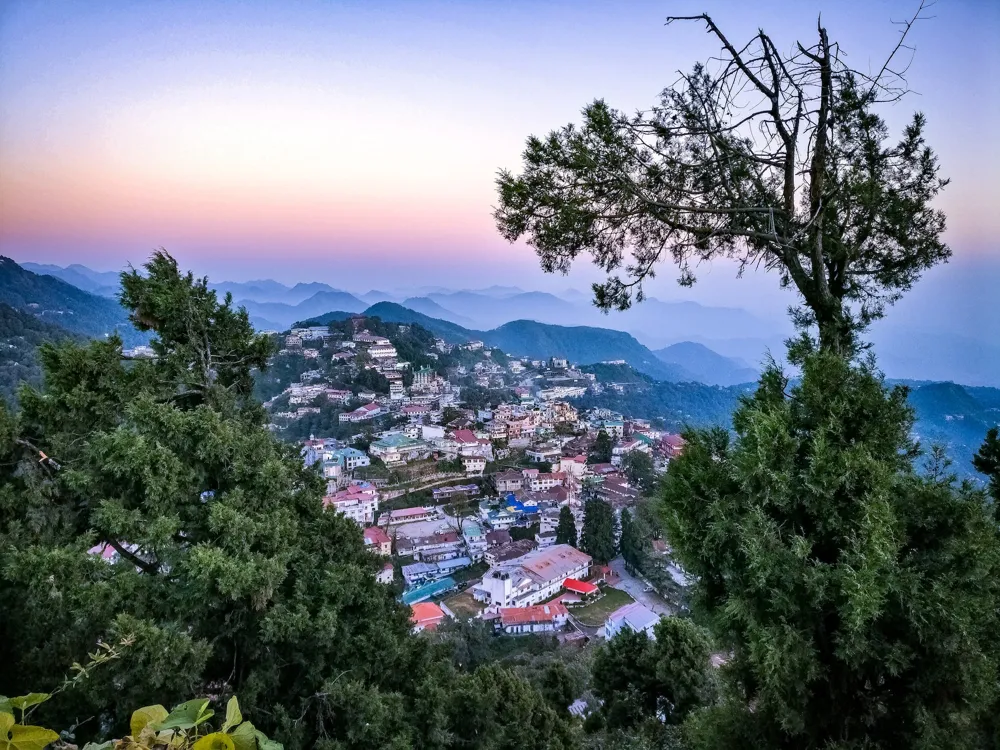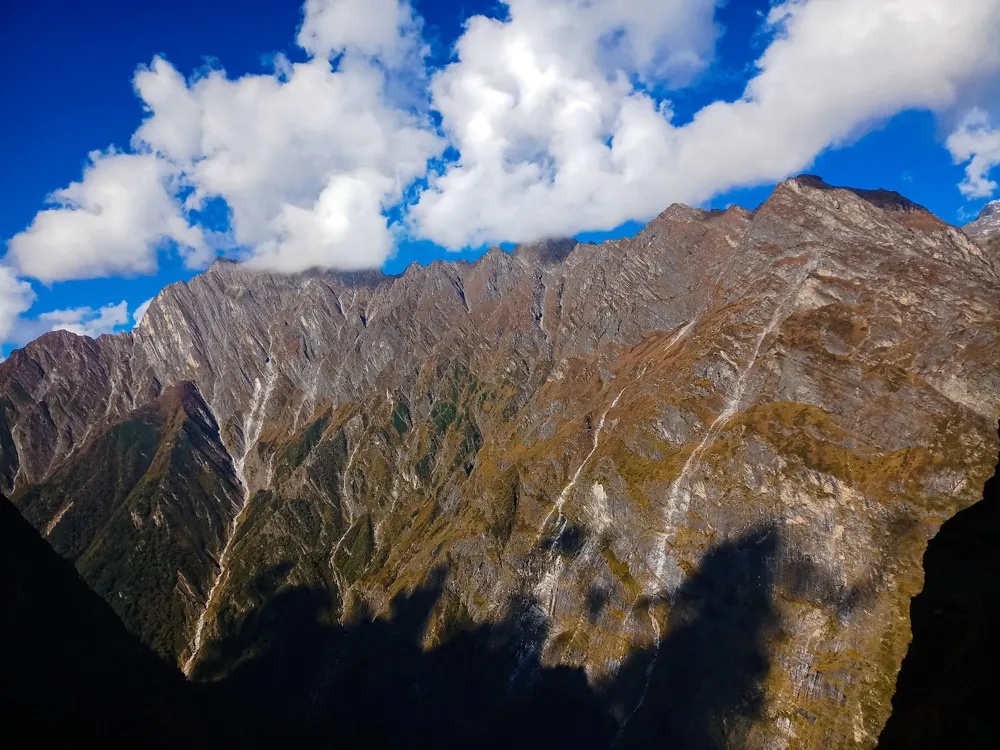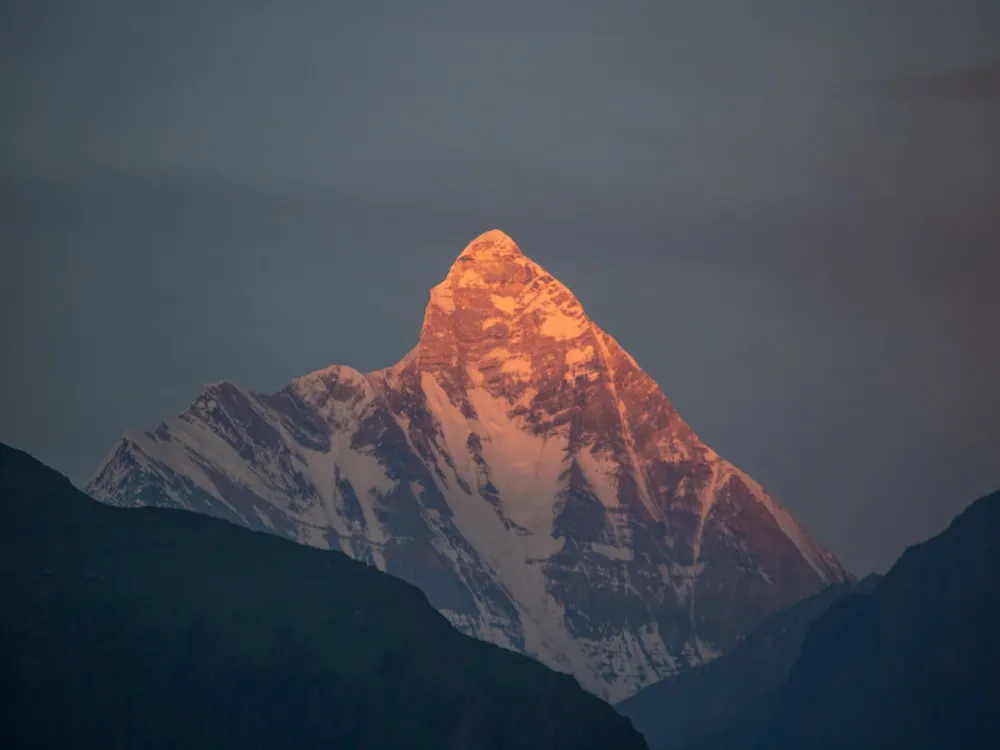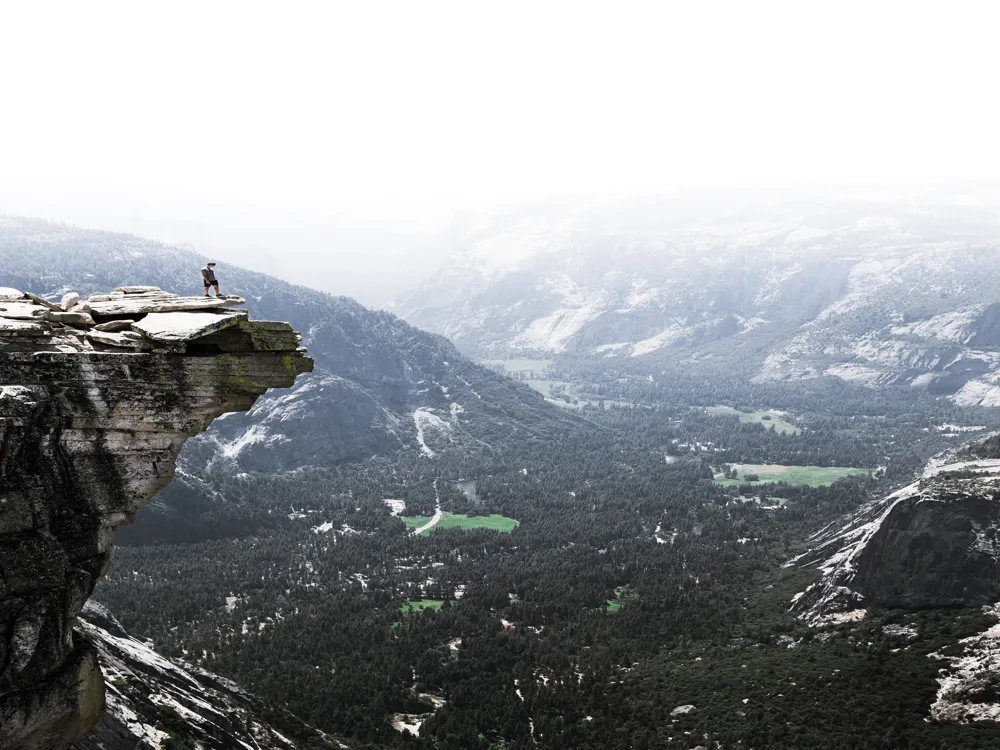Nestled in the high reaches of the Garhwal Himalayas in Uttarakhand, Nanda Devi National Park is a spectacular natural reserve, famed for its majestic beauty and rich biodiversity. Named after Nanda Devi, the second highest mountain in India, the park spans an impressive area of 630 square kilometers. This UNESCO World Heritage Site, part of the larger Nanda Devi Biosphere Reserve, is a haven for nature enthusiasts and adventurers alike. The park's landscape is characterized by its rugged wilderness, encompassing deep gorges, steep slopes, and a diverse range of flora and fauna. It is home to several rare and endangered species, including the Asiatic black bear, snow leopard, and blue sheep. The vegetation varies significantly with altitude, ranging from lush temperate forests at lower elevations to alpine meadows higher up. This rich diversity in habitats contributes to the park's ecological significance and the sheer splendor it offers to visitors. Historically, Nanda Devi National Park has been a revered site. The peak of Nanda Devi, considered sacred by many, has historically attracted pilgrims and mountaineers from around the world. The park's isolation and difficult terrain have preserved its pristine condition, making it an incredible representation of the Himalayan wilderness. However, this also means that access is challenging, preserving the tranquility and untouched beauty of the area. The park's climate is typically alpine. Winters are harsh with heavy snowfall, while summers are pleasant yet unpredictable. This climatic variation plays a crucial role in shaping the life cycles of the resident flora and fauna. The monsoon season, although refreshing, can make trekking routes slippery and challenging. The cultural significance of Nanda Devi National Park is as compelling as its natural beauty. The region has a rich cultural heritage, with many myths and legends associated with its peaks and forests. Local communities, primarily the Bhotiya tribes, have deep spiritual and cultural connections with the landscape, adding a unique dimension to the park's allure. Discussing the 'architecture' of Nanda Devi National Park involves an in-depth look at its natural structure and the intricate ecological framework that defines this Himalayan paradise. The park's 'architecture' is a complex tapestry of geological, hydrological, and biological elements, each contributing to its unparalleled beauty and ecological importance. Geologically, the park is a part of the Greater Himalayas, formed by the uplift of the Earth's crust. It features some of the highest and most rugged mountain ranges in the world, including the Nanda Devi massif. The prominent geological formations, comprising gneisses and schists, have been sculpted by millennia of weathering and glacial activities, creating a dramatic landscape of peaks, valleys, and moraines. The hydrological architecture of the park is equally fascinating. It encompasses a network of rivers and streams, originating from glaciers and snowfields. These water bodies are crucial for sustaining the park's diverse ecosystems and support a wide range of aquatic life. The Rishi Ganga river, cutting through deep gorges, is a notable feature, shaping the park's topography and nurturing its verdant valleys. The biological architecture is the most striking aspect of Nanda Devi National Park. It comprises a diverse array of habitats, from sub-alpine forests to high-altitude meadows, each supporting a unique set of species. The park's floral diversity includes a multitude of alpine flowers, medicinal plants, and several rare species, painting the landscape in vibrant hues during the blooming season. Faunal architecture is equally diverse. The park serves as a sanctuary for numerous species, some of which are globally significant. The higher reaches are the realm of elusive species like the snow leopard and Himalayan musk deer, while the dense forests below harbor a range of mammals, birds, and insects. This rich biodiversity is crucial for maintaining ecological balance and showcases nature's intricate web of life. In conclusion, the 'architecture' of Nanda Devi National Park is a majestic and complex interplay of natural forces and ecosystems. This intricate design, shaped over eons, not only supports a rich array of life forms but also presents a breathtaking panorama that captivates all who visit this remote Himalayan wilderness. - Best Time to Visit: The ideal time to visit Nanda Devi National Park is between May and October. The park remains closed during the winter months due to heavy snowfall. - Permits and Regulations: Obtain necessary permits from the Forest Department, as the park is a protected area. Be aware of and adhere to all park rules and regulations. - Guides and Porters: Hiring local guides and porters is recommended for navigation and support, as the terrain can be challenging. - Clothing and Gear: Pack warm and waterproof clothing, as weather can be unpredictable. Essential gear includes sturdy hiking boots, a hat, sunglasses, and sunscreen. - Food and Water: Carry sufficient food and water. Options inside the park are limited, and it's important to stay hydrated and energized. - Emergency Supplies: Include a first-aid kit, flashlight, and a whistle in your pack. These can be lifesavers in case of an emergency. - Respect Wildlife: Maintain a safe distance from wildlife and do not disturb their natural behaviors. - Leave No Trace: Carry back all non-biodegradable waste. Preserving the park's pristine environment is crucial. - Cultural Sensitivity: Respect the local culture and traditions. The area around the park is home to communities with unique customs and beliefs. Nanda Devi National Park, located in the Chamoli district of Uttarakhand, can be accessed via a combination of road and trek. The nearest major town is Joshimath, which is well-connected by road to major cities like Dehradun, Haridwar, and Rishikesh. From Joshimath, visitors need to embark on a trek to reach the park, as there are no direct road routes available. The nearest airport is Jolly Grant Airport in Dehradun, approximately 295 kilometers away from Joshimath. For those preferring rail, the nearest railway station is at Haridwar, around 276 kilometers from Joshimath. Regular bus services and taxi services are available from these points to Joshimath. Once at Joshimath, the final leg of the journey to Nanda Devi National Park is a trek, which is both challenging and rewarding, offering stunning views of the Himalayan landscape. Read More:Overview of Nanda Devi National Park, Joshimath, Uttarakhand
Architecture of Nanda Devi National Park
Tips When Visiting Nanda Devi National Park
Planning Your Visit
Packing Essentials
Responsible Tourism
How To Reach Nanda Devi National Park
Nanda Devi National Park
Joshimath
Uttarakhand
NaN onwards
View joshimath Packages
Weather :
Tags : National Park
Timings : Before Sunset
Planning a Trip? Ask Your Question
Joshimath Travel Packages
View All Packages For Joshimath
Top Hotel Collections for Joshimath

Private Pool

Luxury Hotels

5-Star Hotels

Pet Friendly
Top Hotels Near Joshimath
Other Top Ranking Places In Joshimath
View All Places To Visit In joshimath
View joshimath Packages
Weather :
Tags : National Park
Timings : Before Sunset
Planning a Trip? Ask Your Question
Joshimath Travel Packages
View All Packages For Joshimath
Top Hotel Collections for Joshimath

Private Pool

Luxury Hotels

5-Star Hotels

Pet Friendly







